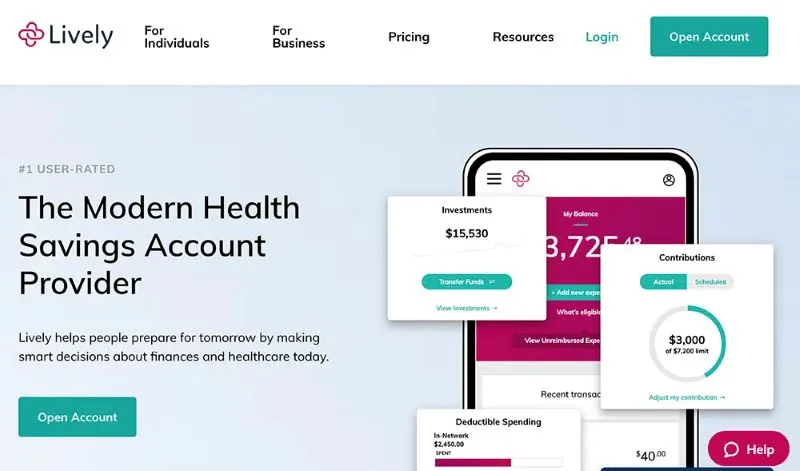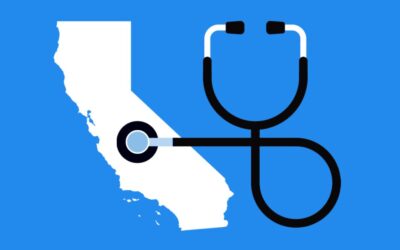
Covered California HSA Plans: How They Work
Welcome to our comprehensive guide on High Deductible Health Plans (HDHPs) and Health Savings Accounts (HSAs). If you’ve ever wondered how to make healthcare more affordable, or how to get more control over your medical expenses, then this post is for you.
What are High Deductible Health Plans
Navigating the world of healthcare can often be a complex journey, filled with jargon and options that are difficult to compare. Among the myriad of choices, High Deductible Health Plans (HDHPs) stand out as a unique category. Understanding what makes a plan an HDHP can empower you to make more informed decisions about your healthcare coverage.
High Deductible Health Plans are a type of health insurance plan that, as the name suggests, come with a higher deductible compared to traditional health insurance plans. A deductible is the amount you pay for covered health care services before your insurance plan starts to pay. With HDHPs, you’re responsible for more of your upfront healthcare costs, but you’ll generally pay lower monthly premiums.
What is a Health Savings Account (HSA)?
An HSA is a tax-advantaged savings account that allows you to set aside money specifically for qualified medical expenses. It pairs exclusively with HDHPs, offering a way to manage the higher costs that come with these plans. The money you deposit into an HSA is tax-deductible, and withdrawals for qualified medical expenses are tax-free.
The Power of Combining HDHPs and HSAs
While HDHPs might seem daunting due to the higher out-of-pocket costs, when paired with an HSA, they offer a powerful financial tool that can benefit you in both the short and long term. Imagine being able to save money pre-tax, grow those savings tax-free through investments, and then use that money tax-free for qualified medical expenses. It’s like a triple tax advantage that can add up to substantial savings over time.
Stay tuned as we dive deep into eligibility criteria, benefits, investment options, and how to strategically use your HSA funds to cover healthcare costs while growing your savings.
Definition and Features of HDHPs
An HDHP is a health insurance plan with a higher deductible compared to traditional insurance plans. A deductible is the amount you must pay out-of-pocket for covered healthcare services before your insurance starts covering costs. In an HDHP, this deductible is notably higher, but in return, the plan usually offers lower monthly premiums. The idea is to give you more responsibility for your initial healthcare expenditures in exchange for more affordable ongoing costs.
HDHPs often come with the following features:
- Higher Deductible: As mentioned, the key characteristic of an HDHP is a high deductible. This means you’ll pay more out-of-pocket before insurance kicks in.
- Lower Premiums: Generally, HDHPs offer lower monthly premiums compared to plans with lower deductibles.
- Out-of-Pocket Maximum: There is a cap on how much you’re required to pay out-of-pocket for medical expenses in a given year, including the deductible and any copayments or coinsurance.
- Network Restrictions: Like many other plans, HDHPs may require you to use a network of doctors to get the maximum benefits, although this varies by plan.
- Preventive Services: HDHPs often cover preventive services like immunizations and screenings at no additional cost to you, even before you meet the deductible.
When Does a Plan Qualify as an HDHP?
The specific criteria that define an HDHP can vary slightly from year to year due to adjustments in healthcare laws and inflation. In 2024, a plan must meet the following requirements to qualify as an HDHP:
- Minimum Deductible: For individual coverage, the minimum annual deductible must be at least $1,600; for family coverage, it’s $3,200.
- Maximum Out-of-Pocket Expenses: For individual coverage, out-of-pocket expenses cannot exceed $8,050; for family coverage, this cap is $16,100.
- Covered Services: The plan should only pay for preventive services before the deductible is met. Any other type of service should be paid out-of-pocket until the deductible is reached.
If a health plan meets these criteria, it is considered an HDHP and can be paired with a Health Savings Account (HSA), offering you a holistic approach to managing healthcare expenses.

Primary Purpose of an HSA
An HSA is a tax-advantaged savings account designed specifically to help you cover qualified medical expenses. These accounts pair exclusively with HDHPs, offering you a financial cushion to manage higher out-of-pocket costs. Unlike a regular savings account, the money in an HSA can grow through interest or investments, providing additional financial leverage for future healthcare needs.
The primary purpose of an HSA is twofold:
- Short-term Benefits: Use pre-tax dollars to pay for immediate healthcare expenses like doctor’s visits, prescriptions, and various medical treatments.
- Long-term Savings: Accumulate tax-free earnings through interest or investments, creating a healthcare nest egg that you can use in the future or even into retirement.
Tax Benefits Associated with HSAs
HSAs come with impressive tax advantages that can substantially maximize your healthcare savings:
- Pre-Tax Contributions: The money you deposit into an HSA is not subject to federal income tax, effectively reducing your taxable income. Some states also offer state tax deductions for HSA contributions.
- Tax-Free Growth: Any interest or investment gains in your HSA grow tax-free, allowing your healthcare fund to compound over time.
- Tax-Free Withdrawals: As long as you use the funds for qualified medical expenses, your withdrawals are entirely tax-free. This means you can pay for healthcare costs without any additional financial burden.
- Portability: HSAs are not tied to your employer, meaning you can take your HSA with you if you change jobs or insurance plans.
- Rollover: Unlike Flexible Spending Accounts (FSAs), HSAs do not have a “use-it-or-lose-it” policy. Your funds roll over from year to year, allowing you to build a substantial healthcare fund over time.
In summary, HSAs offer a triple tax advantage—pre-tax contributions, tax-free growth, and tax-free withdrawals for qualified expenses—that can significantly benefit your financial planning, both for immediate healthcare costs and long-term savings.
How to Open an HSA
Opening a Health Savings Account is a straightforward process, but choosing the right institution can make a significant difference in how your HSA serves you. Below, we outline the steps to open an HSA and explore some options where you might consider setting up your account.
Steps for Opening an HSA
- Confirm Eligibility: Before you can open an HSA, make sure you are enrolled in a qualifying High Deductible Health Plan (HDHP).
- Choose an Institution: Pick a bank, credit union, or specialized HSA provider where you want to open your account.
- Gather Documentation: You’ll typically need identification like a driver’s license, social security number, and proof of HDHP coverage.
- Apply: Most institutions offer online applications, though you can also apply in-person or over the phone.
- Initial Deposit: Some HSAs require an initial deposit to open the account, while others do not.
- Review Terms and Fees: Make sure you understand any fees associated with the account, as well as interest rates if applicable.
- Set Up Contributions: Decide whether you want to contribute through payroll deductions, lump sum deposits, or regular bank transfers.
- Invest Your Funds: Many HSAs offer investment options. Once your account reaches a certain balance, you can invest in mutual funds, stocks, or other vehicles to grow your savings tax-free.
Options for Where to Open an Account
When it comes to choosing a provider, you have various options, including traditional banks, credit unions, and specialized HSA providers. Each has its pros and cons, but it’s essential to choose one that aligns with your financial goals and offers features that will benefit you in the long run.
For example, I have personal experience using Lively for my HSA. Lively offers a user-friendly platform and no monthly maintenance fees, which can be a significant advantage. I do pay a small fee of $25 per year, which allows me to link my Lively account to my Schwab HSA investment account. This linkage gives me the ability to transfer my HSA funds to my connected Schwab HSA brokerage account to take advantage of various investment options such as money market accounts, bonds, stocks, and CDs. This approach allows me to grow my healthcare nest egg more effectively than letting it sit in a standard savings account.
By choosing providers that offer investment options, like Schwab, you can invest your HSA funds in a variety of assets to help grow your healthcare savings even faster. It’s a strategy that has proven successful for many people, including myself, in maximizing the long-term value of an HSA.

Contributions and Limits
Understanding the rules around contributions and their respective limits is crucial when optimizing your Health Savings Account (HSA). Both individuals and families have caps on how much they can contribute in a given tax year, and knowing these limits can help you make the most of your HSA’s financial benefits.
Annual Contribution Limits
The IRS sets annual contribution limits for HSAs, which are subject to change due to inflation adjustments. (2023)
- Individual Coverage: The maximum annual contribution for an individual is $3,850.
- Family Coverage: For families, the limit is $7,700.
It’s essential to note that these limits include all contributions, whether made by you, your employer, or a family member on your behalf. Exceeding these limits can result in tax penalties.
How Contributions Work
Contributions to your HSA can be made in various ways:
- Payroll Deductions: If your employer offers an HSA, you can make contributions directly from your paycheck on a pre-tax basis.
- Lump-Sum Deposits: Some people, like myself, prefer making a yearly lump-sum deposit. I personally contribute $4,850 annually ($3,750 plus an additional $1,000 *catch up contribution) to my HSA. This approach helps me reach the maximum limit and ensures that I have a substantial amount to invest or use for healthcare needs upfront.
- Bank Transfers: You can also make contributions by transferring money from a bank account.
- Third-Party Contributions: Family members or any other third parties can also contribute to your HSA, but remember that these count toward your annual limit.
- Catch-Up Contributions: If you are 55 or older, you are allowed to make an additional “catch-up” contribution of $1,000 per year.
Once your contributions are in the HSA, you can decide how to use those funds. Some people, like myself, choose to invest their contributions for potential tax-free growth. I transfer my yearly deposit to a Schwab HSA brokerage account where I can invest in Money Market accounts or stocks, aiming to grow my healthcare fund over time.
Paying for Medical Expenses
An HSA is not just a savings account but a versatile financial tool that allows you to pay for a wide array of medical expenses. However, knowing the correct way to use these funds is essential to maximize their benefits while staying in line with tax laws.
How to Use HSA Funds for Qualified Medical Expenses
HSA funds can be used to cover a variety of qualified medical expenses, which include but are not limited to:
- Doctor’s visits and surgical procedures
- Dental and vision care
- Prescription medications
- Over-the-counter drugs with a prescription
- Medical equipment like crutches or wheelchairs
To pay for these expenses, most HSAs offer several options:
- Debit Card: Many HSAs issue a debit card that you can use to pay for medical services directly.
- Reimbursement: If you paid for a qualified medical expense out-of-pocket, you could submit a request for reimbursement from your HSA.
- Direct Pay: Some HSAs allow you to pay medical providers directly from your account via an online platform.
Process of Transferring Money Between Brokerage and Regular HSA Accounts
If you’re like me and invest your HSA funds, the process of paying for medical expenses involves an extra step but is quite straightforward:
- Assess the Expense: When a medical expense arises, determine the amount you’ll need to cover it.
- Transfer to Regular HSA: Log in to your brokerage account (I use Schwab for this) and initiate a transfer of the required amount back to your regular HSA account (I use Lively).
- Wait for Clearance: Allow a few business days for the transfer to complete and the funds to become available in your regular HSA account.
- Make the Payment: Once the funds are back in your regular HSA, use your HSA debit card or another payment method to cover the medical expense.
By moving funds back to my regular HSA account, I can easily use my Lively debit card to pay for qualified medical expenses directly. This strategy allows me to keep my funds invested and growing until the moment I need them, thereby maximizing the financial benefits of my HSA.

Common Mistakes to Avoid
Using HSA Funds for Non-Qualified Expenses
One of the most significant pitfalls is using your HSA funds for non-qualified expenses. While the money in your HSA is yours to use as you see fit, spending it on non-qualified expenses before the age of 65 incurs a 20% penalty in addition to regular income tax.
Not Taking Advantage of Investment Options
Another common mistake is letting your HSA funds sit idle in a low-interest account when they could be invested for greater returns. If your HSA provider offers investment options, consider taking advantage of them to grow your healthcare fund more substantially over time.
Frequently Asked Questions (FAQ)
Q: Can I use my HSA for someone else’s medical expenses?
A: Yes, you can use your HSA to pay for the qualified medical expenses of any family member who qualifies as a dependent on your tax return.
Q: Do HSA funds expire?
A: No, unlike some other healthcare accounts, HSAs do not have a “use-it-or-lose-it” rule. Any unused funds roll over to the next year.
Q: Can I contribute to an HSA if I’m on Medicare?
A: No, once you’re enrolled in Medicare, you’re no longer eligible to make new contributions to an HSA. However, you can still use the funds for qualified medical expenses.
Q: What happens to my HSA if I change jobs?
A: HSAs are portable, meaning your account stays with you even if you change employers or health insurance plans.
Ultimately
Managing healthcare expenses is a daunting task for many, but it doesn’t have to be. By understanding the ins and outs of High Deductible Health Plans and Health Savings Accounts, you can make smarter financial decisions that will benefit you in both the short and long term. The key takeaways are:
- Ensure you’re eligible and choose a qualified HDHP
- Open an HSA with a reputable institution
- Understand the contribution limits and make regular deposits
- Utilize your HSA for qualified medical expenses
- Consider investment options for long-term growth
We encourage you to take control of your healthcare expenses through strategic financial planning. An HSA is more than just a savings account; it’s a valuable tool that, when used wisely, can significantly ease the financial burden of healthcare.














































